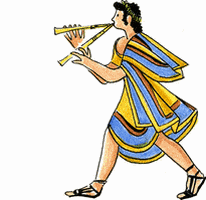Maps of the Antique
Mediterranean Sea
 The Etruscans The Etruscans
 Overview Overview
 Some dates Some dates
 Archaeological sites Archaeological sites
 Museums Museums
 Etruscan Art Etruscan Art
 Coinage Coinage
 Language and Writing Language and Writing

|
ETRURIA: SOME DATES
12th to 8th century B.C.: Early Villanovian, then Villanovian Civilization
7th century B.C: The Dodecapole
The Etruscans adopt the greek model on the military as well as artistic field (Etrusco-Corinthian ceramics), for agriculture, etc. The Etruscan alphabet is in use. Foundation of the Etruscan Dodecapole.
615-509 B.C.: The Etruscan dynasty of Tarquins rules in Rome.
600-480 B.C.: The summit of Etruscan civilization
600 B.C.: Foundation of Capua and the Campanian Dodecapole, settlements in the Po valley.
535 B.C.: The Etruscans and the Carthaginians together drive out the Greeks of Corsica, but Etruria's domination on the sea regresses.
480-350 av. J.C.: Changes and decline
480-453 B.C.: the Etruscans are beaten by the Greeks of Syracuse at Himera, Cumes, Elba.
414 B.C.: the Etruscans ally with Athenians in the disastrous expedition of Sicily.
421 B.C.: Capoue is overtaken by Samnites.
411 B.C.: The trade between the northern cities and Athens decline.
400-350 B.C.: The Gallic tribes invade the north and conquer Mantova, then Milano and Bologna. In the south, the Romans destroy Veies.
340-10 B.C.: Roman domination
351 B.C.: Rome ensures its domination after having eliminated the Latin, Samnite and Etruscan forces.
294-264 B.C.: the Romans rule over all Etruria.
88 B.C.: the Etruscans become Roman citizen.
27 B.C.: Etruria is the seventh region of the Roman administration under Augustus.
|












